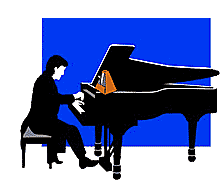|
THE ART OF STUDYNG AND METRONOME STYLE |
|
IAll tutors are at some time put in the position of having to answer the question: "How long does it take to learn to play such and such an instrument?" Or: "Is it more difficult to play the marimba or the drums?".
In the case of the first question the answer is obvious: it depends on your learning ability and the time you devote to study. The banality of the questions apart, the thing that counts most is certainly not how much you study, but how you study. In other words, th  e method you use to get the most profit from the time you devote to studying; that is, the quality, and not the quantity, of the work you put in. e method you use to get the most profit from the time you devote to studying; that is, the quality, and not the quantity, of the work you put in.Clearly, learning involves not only the method you use, but also your degree of musical intelligence. If, on the other hand, study involves pure technique (which might be compared to a sort of gymnastics for the training of the mind, the ear and the articulation of the various percussion movements), then method is fundamental. A technique exercise, for instance, should not be just to loosen up the articulations, but should be gradual, so as to avoid acquiring defects in the attempt to go on to things that are too difficult for the degree of proficiency acquired at that moment; it should also be pleasing, so as to train the musical ear; it should be rhythmical, to reinforce the sense of balance, and essential, to provide maximum benefit in the shortest time possible. One example of how to condense technique and rhythm practice into the space of a few bars, and also, at the same time, learn to sight-read, can be found in the eight sequences in the video "Percussion and drums school". Until a short time ago, mastery of percussion technique was indisputably dependent on certain basic classic principles. This was a type of study which, if performed in the traditional manner, meant a considerable amount of time spent solely on acquiring greater playing speed. Nowadays, instead, with this new method, you can achieve greater speed in a shorter time, and also improve rhythm and reading skills. Unfortunately, the art of study is not something you can be taught easily, so each individual is forced to learn how to progress, in his or her own way, by trying out various systems before coming upon the right one for his or her aptitudes. Tutors ought therefore to give their students the benefit of their experience in this field too, by devoting at least some lessons to how to study. In this way, many errors in the approach to technique and interpretation could be avoided, and students' natural progression would not be upset, or discouraged. One of these errors, in our opinion, is the craze for the metronome, which has become, thanks to the advent of electronic pocket models, an inseparable companion to learners. It is therefore not uncommon to see percussionists or marimba players imitating their piano-playing colleagues by studying with the metronome on the music stand. The metronome is a valuable tool for learning rhythm cadence in various music speeds; it can also be of help in the study of a difficult piece where you have to time your technique mastery gradually - but it should not be over-used. Rhythm is the only natural element in music and cannot be identified with a click - important though this might be for the overall effect in some predominantly rhythmic musical genres - which in itself certainly does not improve musical training. Musicians have to discover their own true rhythm inside themselves - a rhythm that allows everyone to go at the proper pace without getting out of breath and producing an inhuman sort of musical performance. We should aim instead to be perfect human metronomes, so that when we need to step up the pace or increase the effort, we can accelerate the beat and then return to normal without ever losing the rhythm. Besides, even in computer-produced music there was felt a need to add an option that introduces a certain percentage of rhythmic "blurring" in order to simulate a more human performance. Always relying on the artificial rhythm-setting of a metronome, therefore, inhibits the development of a natural sense of rhythm, because no instrument, whether mechanical or electronic, can guide us in an accelerando, a ritardando or a rubato, without some loss of time; we can rely only on our instinct and the experience acquired through study and playing. |